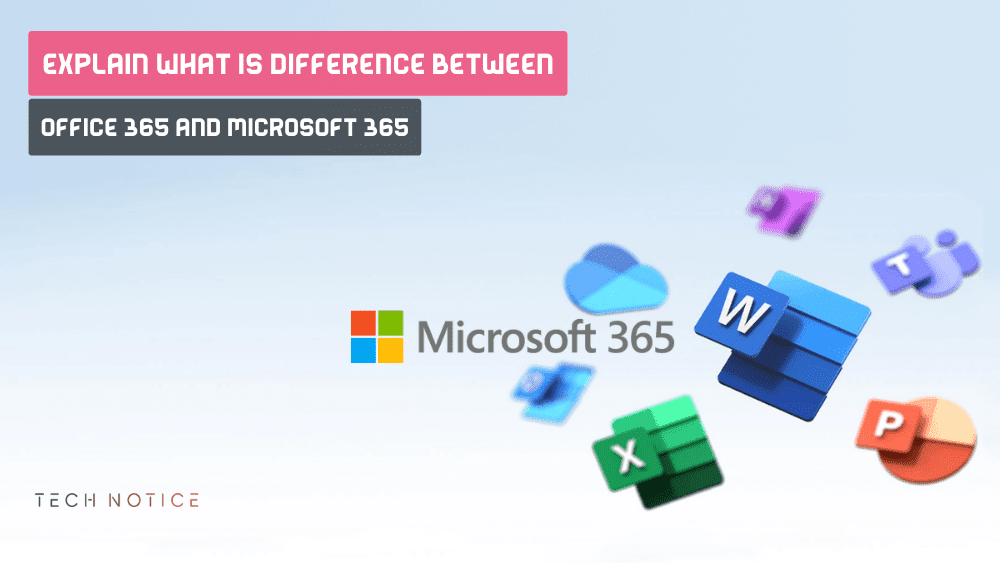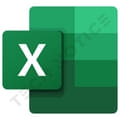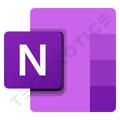Productivity tools, services from Microsoft such as Office 365 and
Microsoft 365 have enjoyed a strong presence since their release in
internet.
Microsoft's application portfolio has a history of offerings and ongoing
advancements.
Over time, it has transformed into a suite of solutions, applications, and
tools that cater to diverse needs of users.
Two of the most prominent services from microsoft in this area are Office 365 And Microsoft 365 or Microsoft Powertoys.
Although they may seem similar in name, they are actually two different
departments in terms of features, tasks, and target audience.
, trying to uncover
their functionality, applications, and pricing models and how they impact
.
It doesn't matter if you are an experienced professional or if you started
your journey on the Internet recently.
To help you determine which of the Microsoft suite Office 365 and Microsoft 365 products best suits your needs, keep reading as we break down the distinctions between them.
What is Microsoft 365, and what is it used for?
Microsoft 365, a comprehensive suite of cloud-based productivity tools and
software, developed and introduced by Microsoft.
Microsoft Office 365 is designed to empower individuals,
businesses, and organizations by providing them with a broad range of
applications and services and tools that
enhance productivity,
collaboration, and communication across teams and workgroups.
Microsoft 365's tools combine various applications,
cloud services, and security measures into a single platform, making it a strong and adaptable option for contemporary corporate settings.
Some of Microsoft 365's key services include:
- Microsoft Office applications
- Cloud services – OneDrive for Business
- Microsoft Teams
- Enterprise Mobility + Security (EMS)
- Windows system 7,8,10,11…
- Advanced security features
- AI-powered insights
- Subscription-based model
- Cross-platform compatibility.
To Microsoft Office 365 sign in You need to register an account with
Microsoft, which is free, which will enable you to access many of the
services offered by the company in addition to Microsoft Office services.
Productivity tools, productivity programs or applications, are a set of
digital tools that are designed to help individuals and organizations
increase efficiency and manage tasks in an easy and quick way.
Productivity tools are used to streamline work processes and manage large
tasks, while enhancing time management and implementing them as quickly as
possible.
There are a lot of productivity tools that come in different forms and
serve a wide range of functions to make work and tasks easier.
-
Office suites such as Microsoft Office 365 And Microsoft 365, Google
Workspace, or LibreOffice
- Project management tools such as Trello, Asana, and Jira
- Note-taking apps like Evernote or OneNote
-
Manage time and calendars such as Microsoft Outlook, Google Calendar
or Todoist
-
Communication and collaboration tools such as Microsoft Teams, Slack,
and Zoom
-
Cloud storage and file sharing such as Dropbox, OneDrive, or Google
Drive
- Automation and workflow tools such as Zapier or IFTTT
-
Mind mapping and visualization such as MindMeister or Lucidchart
- Password managers like LastPass or 1Password
- Manage email and inbox like Gmail and Outlook
-
Cloud office applications such as Google Docs, Sheets, and Slides
-
Text editors and code development environments such as Visual Studio
Code and Sublime Text
You will notice that many productivity tools have been introduced by
Microsoft or Google, such as solutions for managing tasks, organizing time
for completing tasks with high efficiency.
The Difference Between Office 365 And Microsoft 365
Office 365: Basic Suite
Let's start with Office 365, the integrated suite that was and still is
one of the most powerful programs in the world of office applications so
far.
This integrated suite primarily caters to basic productivity tools aimed
at individuals and organizations, offering tools such as:
1. Microsoft Word
Microsoft Word, also known as Word, is an exceptional and robust word
processing application that has completely transformed the way people
create, edit and share documents.
Initially launched in 1983 Microsoft Word offers an array of
functionalities tailored to meet requirements.
Its user-friendly interface ensures accessibility, for users of all skill
levels.
One of the aspects of Word is its versatility, Whether you're composing
messages or designing reports, it seamlessly adjusts to suit your specific
needs.
Word seamlessly integrates with the cloud through Microsoft 365, This
allows multiple users to collaborate on a document simultaneously
regardless of whether they're, in proximity or located anywhere around the
globe.
2. Microsoft Excel
Microsoft Excel is an interactive spreadsheet software that provides a
diverse set of functionalities, It offers an array of capabilities that
cater to needs and requirements.
Excel is specifically designed to organize and process data in a tabular
format. This is useful for designing tables, categorizing budgets,
managing inventories, or analyzing sales trends.
An Excel cell grid is the canvas on which you can organize, manage,
calculate, and visualize data.
Plus a wide range of functions and tools, including SUM, VLOOKUP and IF,
that enable you to perform complex calculations and automate tasks with
ease.
Creating charts and graphs is another notable advantage, as it enables you
to transform data into visual representations that are easy to interpret
graphically.
Collaboration in Excel is enhanced by cloud integration across Microsoft
365, where multiple users can work on the same spreadsheet simultaneously.
This makes it ideal for collaborative projects in teams.
3. Microsoft PowerPoint
When it comes to crafting presentations and conveying information
effectively, Microsoft PowerPoint stands as the undisputed champion.
One of PowerPoint's standout features is its easy-to-use interface, making
it accessible to users of all levels.
PowerPoint enables you to seamlessly integrate text, images, videos, and
animation into your presentations, with a huge amount of professionally
designed templates available.
One of PowerPoint's greatest strengths is its collaboration capabilities.
Through Microsoft cloud-based services like OneDrive and SharePoint,
multiple users can collaborate on a presentation in real time.
Fact you may not know about PowerPoint, did you know that PowerPoint was
first developed by Forethought, Inc, and was originally called
“Presenter”?
Microsoft later acquired the program in 1987 and renamed the program as
PowerPoint.
4. Microsoft Outlook
Microsoft Outlook is a program for managing email and personal
information, as well as
managing emails, calendars, contacts, and tasks.
Outlook's primary function is managing emails, powerful spam filters, and
seamless integration with other Microsoft Office applications.
One of Outlook's standout features is its powerful calendar functionality,
allowing users to easily schedule appointments, meetings, and events, with
the ability to integrate multiple calendars from different sources,
including work, personal, and shared calendars.
Outlook isn't just limited to desktop, it offers a mobile app that
seamlessly syncs with your email, calendar, and contacts.
This means I can stay connected and productive even when I'm on the go.
5. Microsoft OneNote
OneNote tool is often overlooked by many in favor of its more popular
siblings like Word, Excel, and PowerPoint.
At first glance, OneNote may seem like just another note-taking app, but
its capabilities extend far beyond jotting down random thoughts.
Think of it as your digital notebook, where you can create notebooks for
different purposes, sections within those notebooks for specific topics,
and pages for individual notes.
It mimics the architecture of traditional laptops, making it incredibly
intuitive for users of all backgrounds.
Unlike traditional paper notebooks, you're not limited by physical space,
as you can add text, images, web snippets, audio recordings, and even
handwritten notes using a stylus or your finger on touch devices.
Collaboration is another area where OneNote shines, as multiple users can
edit and contribute to the same notebook simultaneously via the cloud.
Collaboration
Office 365 is highly effective when it comes to working group, as it
allows multiple users or teams to edit documents simultaneously in time.
This makes it a valuable tool, for businesses and educational institutions
alike.
Additionally, the collaborative features extend to versions of
applications, making remote collaboration effortless.
Cloud storage
Microsoft's cloud storage solution, known as OneDrive, is a component of
Office 365, It provides users with space in the cloud to store, sync, and
share files.
This feature proves handy for individuals who need access to their
documents from with an internet connection.
Compatibility across devices
Office 365 is compatible with platforms such as Windows, macOS, Android,
and iOS.
This ensures that users can access their documents and applications
seamlessly from a range of devices.
Pricing options
To cater to user requires effectively, Office 365 offers a variety of
subscription plans.
Users have the flexibility to choose plans like Office 365 Personal or
Office 365 Home, which include apps and
cloud storage capacities.
For business users with requirements there are options like Office 365
Business Essentials, Business Standard or Business Premium, for selection.
Security
Office 365 incorporates security measures to safeguard your data,
including encryption and access controls.
Nevertheless, the advanced security and compliance features are typically
available, in upgraded Microsoft 365 packages.
Microsoft 365: The Comprehensive Solution
Now, let's shift our focus to Microsoft 365, which can be seen as a suite
that extends beyond the boundaries of Office 365.
Microsoft 365 includes core office applications while adding a layer of
advanced productivity and security tools.
These are the features it offers for Microsoft 365:
Advanced security
One of the key features that set Microsoft 365 apart is its advanced
security features.
With the increasing number of cybersecurity threats and
viruses, Microsoft
has fortified this group with robust security measures.
This includes threat protection, identity management, data loss
prevention, and more.
Microsoft 365 is designed to provide a secure environment for users and
their data, making it the preferred choice for businesses that handle
sensitive information.
Enterprise Mobility + Security (EMS)
Microsoft 365 includes EMS, a comprehensive suite of products that enable
organizations to manage and secure their mobile devices, applications, and
data.
This is especially useful for businesses that rely on mobile devices for
business purposes and need to maintain control and security over them.
Windows systems
For businesses, Microsoft 365 offers Windows, ensuring users have access
to the latest and most secure
Windows operating system.
Additionally, Microsoft Intune, included in some Microsoft 365 plans,
allows for centralized device management, making it easier to maintain
security and compliance standards across the organization.
Microsoft Teams
Microsoft Teams is a collaboration platform that goes beyond email and
document sharing.
It offers features like chat, video conferencing, and integration with
other Microsoft 365 apps, making it a hub for team communication and
project management.
Desktop applications
While Office 365 provides online versions of core applications, Microsoft
365 includes full desktop versions of these applications.
This means users have the option to install and use Word, Excel,
PowerPoint, and other applications locally on their devices, even when
offline.
Pricing
Microsoft 365 offers a range of plans that cater to different types of
users, from individuals and small businesses to large enterprises.
Pricing varies based on included features, and enterprise-level plans
naturally require a higher price point due to their advanced security and
management capabilities.
Comparing the two: Office 365 And Microsoft 365
Now that we've gone over the details of each suite, let's do a
side-by-side comparison to better understand the differences between
Office 365 and Microsoft 365:
In 2021, Microsoft announced the rebranding of Office 365 to Microsoft 365
to better reflect the comprehensive nature of the subscription, which
includes not only Office applications, but also a wide range of services
designed for personal and business use.
However, the basic concept of continuous access and updates remains
the same.
|
Office 365 |
Microsoft 365 |
| Purpose and Audience |
Ideal for individuals, students, and small businesses looking for
basic productivity tools with collaborative features.
|
Designed for businesses of all sizes, provides advanced security,
management, and collaboration tools, and is also suitable for
individuals looking for the highest levels of security and advanced
productivity features.
|
| Basic Applications |
Includes Word, Excel, PowerPoint, Outlook, and OneNote. |
Includes the same core apps as Office 365 but with the added benefit
of full desktop versions.
|
| Cooperation |
Provides essential real-time collaboration features for co-editing
documents online.
|
Offers powerful collaboration tools, including Microsoft Teams,
facilitating seamless communication and project management.
|
| Security |
Provides basic security features such as encryption and access
controls.
|
Provides advanced security measures, including threat protection,
data loss prevention, and identity management, making it suitable
for organizations with stringent security requirements.
|
| Device Management |
Limited device management capabilities. |
Includes features like Windows 10 or 11,and Microsoft Intune to
centrally manage devices.
|
| Pricing |
Offers cost-effective plans for individuals, students, and small
businesses.
|
More expensive than Office 365 but provides a comprehensive package
suitable for businesses and users with advanced security needs.
|
Make a choice: Office 365 or Microsoft 365
Choosing between Office 365 and Microsoft 365 ultimately comes down to
meeting your specific needs and priorities.
Here are some scenarios to help you make an informed decision:
Scenario 1: Individual or student
If you're an individual or student who's mainly looking for basic
productivity tools and doesn't need advanced security or management
features, Office 365 is the most budget-friendly option.
It provides the basic applications you need to create documents, along
with online collaboration features.
Scenario 2: Small Business
Small businesses that rely on collaborative work and basic security
features may find Office 365 sufficient.
It provides a cost-effective solution for teams to work together
efficiently.
Scenario 3: Business or organization
For businesses or organizations that prioritize data security and advanced
management, Microsoft 365 is the best choice.
Advanced security features, enterprise mobility solutions, and the
inclusion of Microsoft Teams make it an all-in-one package for businesses
of all sizes.
Scenario 4: An individual with high security needs
If you're an individual who cares about data security and advanced
productivity features, Microsoft 365 is worth considering.
It provides an extra layer of security and full desktop versions of
applications for offline use.
No, Microsoft 365 offers a more comprehensive set of apps and features, including advanced security and device management capabilities, making it suitable for businesses and individuals with higher security needs.
Yes, you can upgrade from Office 365 to Microsoft 365 or switch between different plans within groups, depending on your requirements.
Yes, there are free
alternatives for Microsoft Office like Google Workspace (formerly G Suite) and LibreOffice, but they may not offer the same level of integration, collaboration, and advanced security features.
Microsoft Teams is included in both Office 365 and Microsoft 365, but is more integrated and feature-rich in the Microsoft 365 suite.
Yes, Office 365 and Microsoft 365 are compatible with a wide range of platforms, including Windows, macOS, Android, and iOS.
Conclusion
Selecting the right productivity suite can have an impact, on how
efficiently you work and the quality of your output.
Although Office 365 covers the essentials, Microsoft 365 goes beyond that
by offering enhanced features that cater to the needs of businesses and
individuals who prioritize security measures.
By comprehending the distinctions, between
Office 365 vs. microsoft 365 you can make a decision that aligns
with your needs.
This ensures that your digital workspace is optimized to achieve results.










No comments: